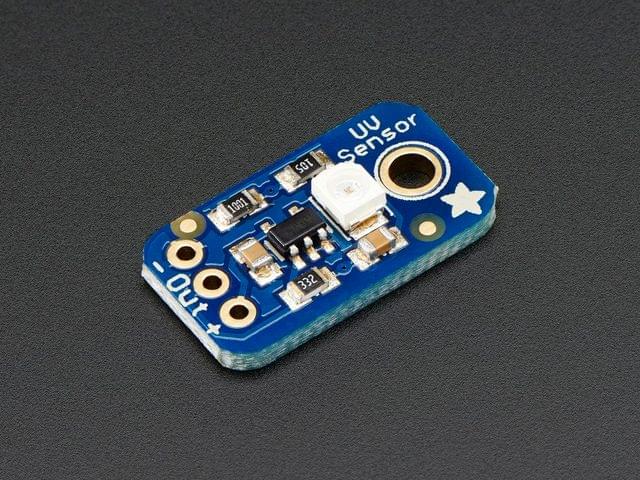-
TERMINALS
- TERMINALS
-
WIRELESS MODULES
- WIRELESS MODULES
-
DEVELOPMENT BOARDS & KITS
- DEVELOPMENT BOARDS & KITS
-
RF and Wireless
- RF and Wireless
-
SINGLE BOARD COMPUTER
- SINGLE BOARD COMPUTER
-
BREAKOUT BOARDS
- BREAKOUT BOARDS
-
LED
- LED
-
LCD & DISPLAYS
- LCD & DISPLAYS
-
TEST AND MEASUREMENT
- TEST AND MEASUREMENT
-
DEVELOPMENT BOARDS AND IC's
- DEVELOPMENT BOARDS AND IC's
-
CABLES/WIRES/FANS
- CABLES/WIRES/FANS
-
EMBEDDED COMPUTERS
- EMBEDDED COMPUTERS
-
INDUSTRAL AUTOMATION AND CONTROL
- INDUSTRAL AUTOMATION AND CONTROL
-
COMPUTER EQUIPMENT
- COMPUTER EQUIPMENT
-
CONNECTORS & INTERCONNECTS
- CONNECTORS & INTERCONNECTS
-
MOTORS/DRIVERS/ACTUATORS/MODULES
- MOTORS/DRIVERS/ACTUATORS/MODULES
-
MAKER/DIY EDUCATIONAL
- MAKER/DIY EDUCATIONAL
-
BASIC COMPONENTS
- BASIC COMPONENTS
-
TOOLS & ACCESSORIES
- TOOLS & ACCESSORIES
-
FPGA HARDWARE
- FPGA HARDWARE
-
ARTILA
- ARTILA
-
POWER SUPPLIES
- POWER SUPPLIES
-
ROBOTICS & AUTOMATION
- ROBOTICS & AUTOMATION
-
TRANSDUCERS
- TRANSDUCERS
-
MEMORY CARDS & MODULES
- MEMORY CARDS & MODULES
-
SOFTWARE
- SOFTWARE
Description
Extend your light-sensing spectrum with this analog UV sensor module. It uses a UV photodiode, which can detect the 240-370nm range of light (which covers UVB and most of UVA spectrum). The signal level from the photodiode is very small, in the nano-ampere level, so we tossed on an opamp to amplify the signal to a more manageable volt-level.
This sensor is much simpler than our Si1145 breakout, it only does one thing and gives an analog voltage output instead of requiring a complicated I2C setup procedure. This makes it better for simple projects. It also has a 'true' UV sensor instead of a calibrated light-sensor. To use, power the sensor and op-amp by connecting V+ to 2.7-5.5VDC and GND to power ground. Then read the analog signal from the OUT pin. The output voltage is: Vo = 4.3 * Diode-Current-in-uA. So if the photocurrent is 1uA (9 mW/cm^2), the output voltage is 4.3V. You can also convert the voltage to UV Index by dividing the output voltage by 0.1V. So if the output voltage is 0.5V, the UV Index is about 5.
Please note, our UV LEDs are 400nm, outside the range of this sensor, so if you're trying to test this sensor, don't use them! A UV tanning lamp or 'lizard-lamp' will work much better.
Technical details
Details:
- Dimensions: 10mm x 19mm x 2mm / 0.4" x 0.75" x 0.08"
- Weight: 0.7g
- Home
- Analog UV Light Sensor Breakout - GUVA-S12SD
Analog UV Light Sensor Breakout - GUVA-S12SD
SIZE GUIDE
- Shipping in 10-12 Working days
- http://cdn.storehippo.com/s/59c9e4669bd3e7c70c5f5e6c/ms.products/5b07d2908bdb2da12b338a2e/images/5b07d2908bdb2da12b338a2f/5b07d2298bdb2da12b33869a/5b07d2298bdb2da12b33869a.jpg
Description of product
Description
Extend your light-sensing spectrum with this analog UV sensor module. It uses a UV photodiode, which can detect the 240-370nm range of light (which covers UVB and most of UVA spectrum). The signal level from the photodiode is very small, in the nano-ampere level, so we tossed on an opamp to amplify the signal to a more manageable volt-level.
This sensor is much simpler than our Si1145 breakout, it only does one thing and gives an analog voltage output instead of requiring a complicated I2C setup procedure. This makes it better for simple projects. It also has a 'true' UV sensor instead of a calibrated light-sensor. To use, power the sensor and op-amp by connecting V+ to 2.7-5.5VDC and GND to power ground. Then read the analog signal from the OUT pin. The output voltage is: Vo = 4.3 * Diode-Current-in-uA. So if the photocurrent is 1uA (9 mW/cm^2), the output voltage is 4.3V. You can also convert the voltage to UV Index by dividing the output voltage by 0.1V. So if the output voltage is 0.5V, the UV Index is about 5.
Please note, our UV LEDs are 400nm, outside the range of this sensor, so if you're trying to test this sensor, don't use them! A UV tanning lamp or 'lizard-lamp' will work much better.
Technical details
Details:
- Dimensions: 10mm x 19mm x 2mm / 0.4" x 0.75" x 0.08"
- Weight: 0.7g
NEWSLETTER
Subscribe to get Email Updates!
Thanks for subscribe.
Your response has been recorded.
INFORMATION
ACCOUNT
ADDRESS
Tenet Technetronics# 2514/U, 7th 'A' Main Road, Opp. to BBMP Swimming Pool, Hampinagar, Vijayanagar 2nd Stage.
Bangalore
Karnataka - 560104
IN
Tenet Technetronics focuses on “Simplifying Technology for Life” and has been striving to deliver the same from the day of its inception since 2007. Founded by young set of graduates with guidance from ardent professionals and academicians the company focuses on delivering high quality products to its customers at the right cost considering the support and lifelong engagement with customers. “We don’t believe in a sell and forget model “and concentrate and building relationships with customers that accelerates, enhances as well as provides excellence in their next exciting project.


